Projects
The Ventnor Community Fund and Endowment has chosen four projects for support through fund-raising. In order of expected time between initiation and goal attainment, from shortest (12 months) to longest (ongoing), the four projects are as follows:
- Playground/Titus Field Replacement of Titus Field playground equipment
- Ventnor “Bark Park” Creation of a permanent Ventnor Dog Park
- Ventnor West Eco-Tourism Support of Ventnor West’s transformation into an eco-tourism attraction for passive recreation and nature education
- Downtown Ventnor Initiative Support of the “Downtown Ventnor” initiative to improve and beautify the town’s commercial districts
You may donate online to for projects through the Fund
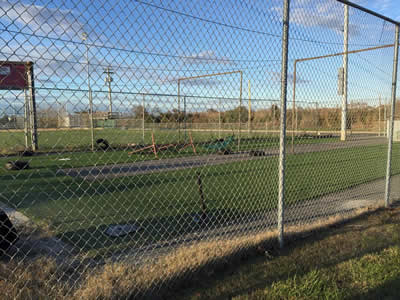 Titus Field Playground Titus Field Playground
These photos tell the tale of how the playground equipment has fared over years of wear, tear and the elements.
Salt air has rusted metal components. Some edges have become ragged and potentially dangerous. On the date that photos were shot, equipment and materials necessary to the storm sewer drainage infrastructure project were being stored and staged nearby. Litter (mostly plastic bottles) dotted corners of the play areas. The playground is in Ventnor Heights which, over the years, has many of the full time families with children who call Ventnor “home.”
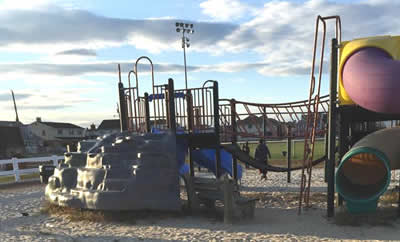 Ventnor’s own C-Sure park – a collaborative effort of private fund-raising and city cooperation – brought a wonderful playground to life along the beach block on Somerset Ave. in 2007. Some of the lessons learned about its accessibility for physically challenged children could and should be imported in design of a better playground in the Heights. Ventnor’s own C-Sure park – a collaborative effort of private fund-raising and city cooperation – brought a wonderful playground to life along the beach block on Somerset Ave. in 2007. Some of the lessons learned about its accessibility for physically challenged children could and should be imported in design of a better playground in the Heights.
There are other design concepts, as well, such as staging age-appropriate equipment in their own areas so that toddlers, elementary school ages, and teen ages are accommodated but the youngest don’t mix with the rougher play of the oldest. Some important design principles can be found at this link.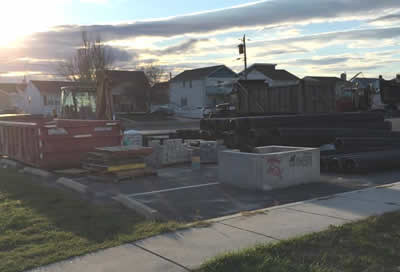
In one-step-at-a-time fashion, the fund-raising goal for this project is
$25,000 to start the process of bringing some better equipment to the area. Another Ventnor non-profit – the Ventnor Tourism Association – has also noted the condition of that playground and VCF&E expects that there would be mutual collaboration in achieving a common goal: a playground to which all residents can point with pride and families can enjoy.
BACK TO TOP
Ventnor “Bark Park”.. a dog park for Fido.
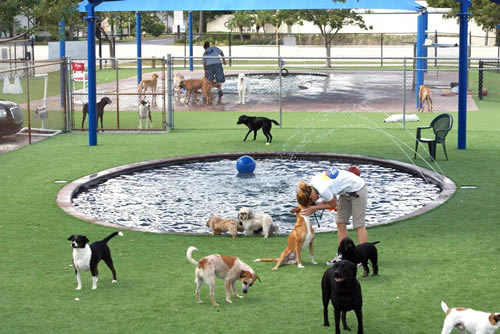 At present, the location for a proposed Ventnor Bark Park (VBP) would be in the 600 block of Lafayette Ave. It would consist of a section of the now-abandoned Ventnor Golf Driving Range field on the side furthest from the VECC but proximate to an off-street parking area which once served users of the driving range. There are some regulatory hurdles to be cleared in obtaining proper approvals for this location due to the overlay of federal, state, and local jurisdictions arising from past funding sources. At present, the location for a proposed Ventnor Bark Park (VBP) would be in the 600 block of Lafayette Ave. It would consist of a section of the now-abandoned Ventnor Golf Driving Range field on the side furthest from the VECC but proximate to an off-street parking area which once served users of the driving range. There are some regulatory hurdles to be cleared in obtaining proper approvals for this location due to the overlay of federal, state, and local jurisdictions arising from past funding sources.
City of Ventnor is favorably disposed to such a use, but accommodations of the VECC’s needs for a school-related evacuation area using part of the field militate that only a section of the grounds be devoted to a VBP.
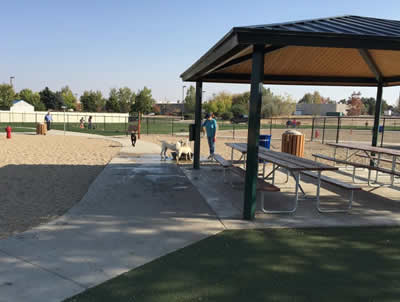 The DEP is believed to be favorably disposed as it was willing to authorize a “temporary” six-month dog park use but the cost of proper fencing would be a waste of generously donated funds if the DEP’s temporary authorization did not give way to permanent status. The DEP is believed to be favorably disposed as it was willing to authorize a “temporary” six-month dog park use but the cost of proper fencing would be a waste of generously donated funds if the DEP’s temporary authorization did not give way to permanent status.
It is the federal piece of the puzzle – the National Park Service -- which requires authorization. See Background, below.
The cost of the nearby Margate Dog Park, which is only open to Margate residents who pay an annual fee, is stated on its website to have been approximately $60,000. That may be a recitation of taxpayer cost as other estimates place it closer to $80,000 after including private donations which made it possible. We take our cues from that larger amount for preliminary budgeting purposes. While exploring the features of other dog parks around the country, the Fund Advisors are looking most carefully at the Margate and Ocean City dog parks as the nearest towns with comparable issues pertinent to creating and maintaining such a facility. The AKC and other organizations provide many general guidelines:
Double-gated entry area to keep newly arriving dogs safe as other dogs tend to “rush the gate” to sniff out newcomers.
- Standard heights for fencing.
- Separation of large dog play areas from small dog areas.
- Advisability of variable terrain surfacing materials (sand/stones – natural grass – pathways – doggie-turf)
- Agility equipment
- Water supply
- Shelter/shade
- Electrical supply if there are to be “Paws Pass” keycards issued to users
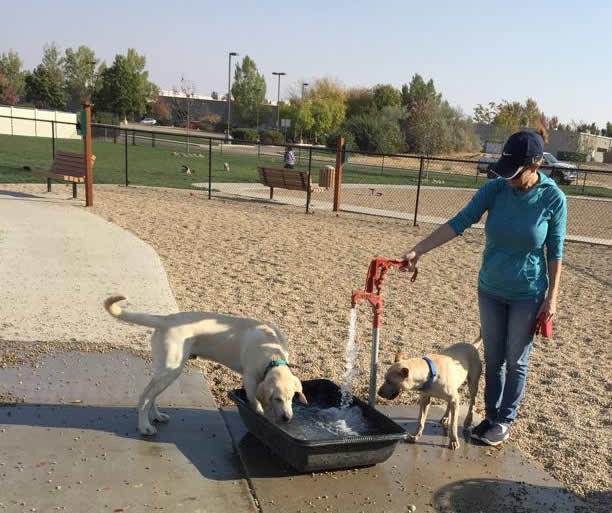 While many parks around the country are open and “free to all” the characteristic which almost all share if located in the Northeast is that they are part of a much larger park acreage. E.g., the dog park which is part of the vast South Mountain acreage overlapping five municipalities in Essex County, NJ is a free access park. Free parks are almost never in close proximity to residential homes nor potentially sensitive locations such as schools (presence of young children) and retirement facilities. The concerns revolve around the potential of any public facility with a “free entry” and open-gate arrangement to attract vandals or after-hours mischief posing risks to nearby neighbors. Ventnor’s special considerations are nearby neighbors, the VECC school, and the Shalom House with retirees. While many parks around the country are open and “free to all” the characteristic which almost all share if located in the Northeast is that they are part of a much larger park acreage. E.g., the dog park which is part of the vast South Mountain acreage overlapping five municipalities in Essex County, NJ is a free access park. Free parks are almost never in close proximity to residential homes nor potentially sensitive locations such as schools (presence of young children) and retirement facilities. The concerns revolve around the potential of any public facility with a “free entry” and open-gate arrangement to attract vandals or after-hours mischief posing risks to nearby neighbors. Ventnor’s special considerations are nearby neighbors, the VECC school, and the Shalom House with retirees.
Both Ocean City and Margate have adopted pass-key protected locked gates and a system of user fees. Margate charges $30; Ocean City has a bifurcated schedule of $20 for residents and $40 for non-residents.
The receptivity of the Ventnor City Commission to a dog park presentation by Julie Van Duyne – who started a GoFundMe account (no tax deductibility) for a temporary dog park and who since has been in touch with VCF&E about combining volunteer forces to achieve a permanent dog park – suggested that fees, pass-keys, dog registrations with Ventnor calculated to provide “proofs” of vaccination would be conditions precedent to full city approval. In addition, the VCF&E has been in contact with one of the officers of the non-profit Ocean City group which funded that city’s dog park and was advised that proper insurances were obtained by that group in order to provide O.C. with a “hold harmless” agreement in respect of any liability. Cost for insurance premiums for a policy with $1M/$2M liability coverage and $50,000 property damage coverage is currently $1,100 per year for the O.C. group.
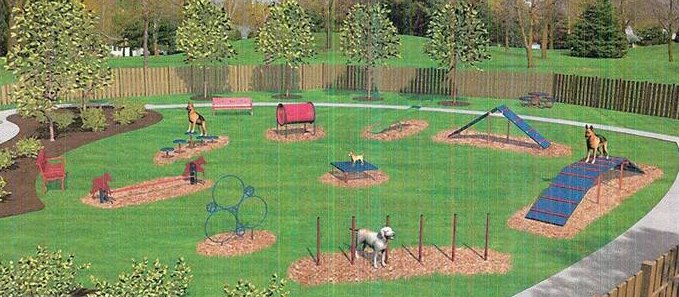
The Margate facility was largely undertaken at taxpayer cost; the Ocean City facility is the result of a citizen-initiated and funded effort more aligned our model. VCF&E’s commitment is to create amenities without impacting taxpayers nor public budgets to the maximum extent possible.
Spearheading the VCF&E’s dog park effort will be Fund Advisor Barbara Berman. Additionally, Rick and Doris Jones have attended a gathering of VCF&E people with CFSJ’s executive director and committed themselves to working on this project, while others have pledged generous sums of $500 once a vehicle for tax-deductible donations was established. Fund Advisor Cheryl Venezia has also offered (for her own business) and suggested (for other willing businesses in Ventnor) to collect casual donations of cash at her cash register.
A dog park is an ambitious undertaking, but it can and will happen if Ventnor people commit the 3T’s of Time, Treasure and Talent to make it happen.
Background: At some point after Ventnor already had held public hearings involving the so-called “land swap deal” with the NJ Department of Environmental Protection – which had impounded release of a $2.1 Million package of grants ($500,000) and low-cost loans for the $3.2 Million rebuilding of Ventnor Fishing Pier upon the basis that Ventnor had never been authorized to tear down the Ice Skating Rink to make way for the new Library & Cultural Arts Center – the city was informed that the National Park Service had played a role in financing the ice rink and that NPS would require the city to hold a fresh set of hearings. Until 2015, this information was not known to city officials.
As part of that revelation, it came to light that the NPS had also been involved in the Golf Driving Range, that the field might be subject to a requirement of “active recreation” usage, and that any permanent improvements would need federal authorization from NPS. One of the Fund Advisors is a lawyer who has done some very preliminary research into how “active recreation” is defined; the classification that a dog park might be given is not explicit. He has done some other preliminary research into the U.S. Code to determine the procedures for NPS to reclassify or declassify public lands with which it has had involvement. If the effort to install a VBP on city-owned property should meet with a refusal, then the Fund Advisors would explore other avenues vis-à-vis exploring other public locations and/or re-scoping the project to purchase land for a dog park or several “pocket parks.”
BACK TO TOP
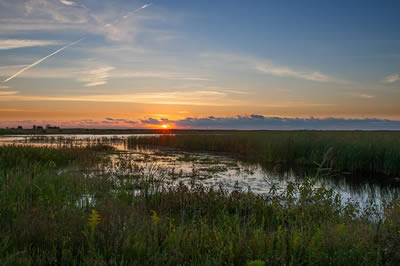 Ventnor West Eco-Tourism Ventnor West Eco-Tourism
Ventnor West is a tract of land beyond the VECC which has twice been threatened and twice saved by the outcries of Ventnor’s own residents and stakeholders. This “project” of the Ventnor Community Fund is to raise tax-deductible donations toward the purchase of materials which could be used by the Ventnor Green Team and a group of Rutgers University students as the work begins toward a goal of enhancing it as a nature conservancy.
Background. The first threat to Ventnor West arose in 1997, when its development into residential condos was proposed by a past city government. The then-extant Ventnor Community Association hosted a presentation about the “treasury of nature” within the tract and mobilized to bring pressure to halt development plans. There is still some residual impact of what was planned, in the form of zoning classifications which are laid out in Rutgers University’s 2014 study entitled: Development of Climate Change Adaptation Elements for Municipal Land Use Plans: Building Resiliency in Ventnor City, New Jersey.
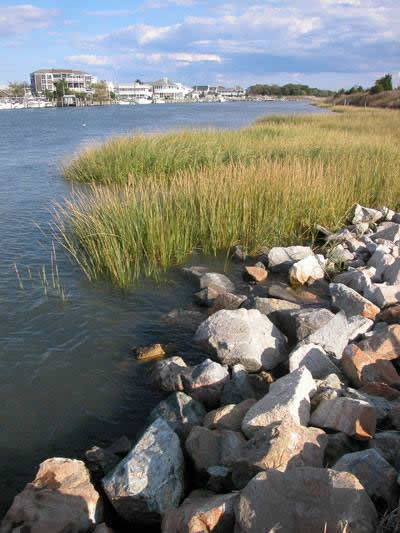 The second threat arose in 2007 when a past city government proposed turning over substantial acres of Ventnor West’s land area to a dredge spoils dumping area, which would feature a 20 foot tall earthen wall to hold the spoils as content until they could de-water and later be trucked elsewhere as landfill. The proximity to the VECC and the Shalom House retiree population were of grave concern vis-à-vis possible toxicity of the spoils and the impact of heavy trucks engaged in later transport of dewatered spoils upon fragile roads. Once again, there was a presentation about the proposal. Again, there was a presentation about the plans and the tract at a gathering of a later community civic association. A full page ad was taken out to publish a treatise about the value of Ventnor West by Matt Steinen, now serving on Ventnor’s appointed Green Team. Again, a public outcry ensued. The second threat arose in 2007 when a past city government proposed turning over substantial acres of Ventnor West’s land area to a dredge spoils dumping area, which would feature a 20 foot tall earthen wall to hold the spoils as content until they could de-water and later be trucked elsewhere as landfill. The proximity to the VECC and the Shalom House retiree population were of grave concern vis-à-vis possible toxicity of the spoils and the impact of heavy trucks engaged in later transport of dewatered spoils upon fragile roads. Once again, there was a presentation about the proposal. Again, there was a presentation about the plans and the tract at a gathering of a later community civic association. A full page ad was taken out to publish a treatise about the value of Ventnor West by Matt Steinen, now serving on Ventnor’s appointed Green Team. Again, a public outcry ensued.
Current Status. Because of a land swap involving Ventnor West acreage being added formally to the Recreation and Open Space Inventory, the future of Ventnor West seems to be less subject to threats. What is lacking at the present time is any funding to assist its evolution into a nature conservancy for passive recreation.
At a summer 2015 Ventnor City Commission meeting, a question was posed about whether the final approval of the Ice Rink – Ventnor West “ROSI land swap” was a pre-condition of taking active steps to start work inside of Ventnor West.
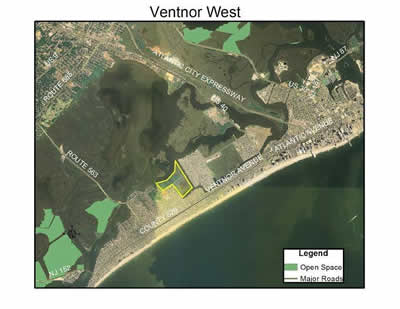 The answer: No. The answer: No.
Only the lack of money is holding back Ventnor West’s transition into becoming what it is destined to be.
As a July 2015 news article explains, Ventnor expects to obtain impounded funds from the DEP. Whether Ventnor applies those long-delayed dollars to pursue plans in Ventnor West, to pay down remaining bonded debt associated with the fishing pier, or make other application of those funds is largely outside the control of private citizens.
For nearly two decades since the first “threat” arose in 1997, it’s been almost a given that most Ventnor residents want Ventnor West to become something wonderful and nature-centric.
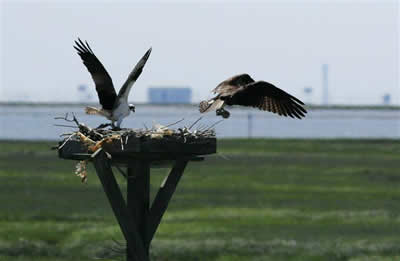 In making Ventnor West a project “cause” for which VCF&E now raises tax-deductible donations, the Fund Advisors are giving support to the notion that if that the two successive “savings” of Ventnor West began with ordinary citizens speaking out, then its first steps toward transformation might as well enlist support from that same source. Private citizens persuaded to be generous. Indeed, that is how Cape May began the evolution of its now flourishing eco-tourism attractions. Private citizens moved to take action, make donations and all toward the goal of living in a town which itself lives in harmony with nature. In making Ventnor West a project “cause” for which VCF&E now raises tax-deductible donations, the Fund Advisors are giving support to the notion that if that the two successive “savings” of Ventnor West began with ordinary citizens speaking out, then its first steps toward transformation might as well enlist support from that same source. Private citizens persuaded to be generous. Indeed, that is how Cape May began the evolution of its now flourishing eco-tourism attractions. Private citizens moved to take action, make donations and all toward the goal of living in a town which itself lives in harmony with nature.
BACK TO TOP
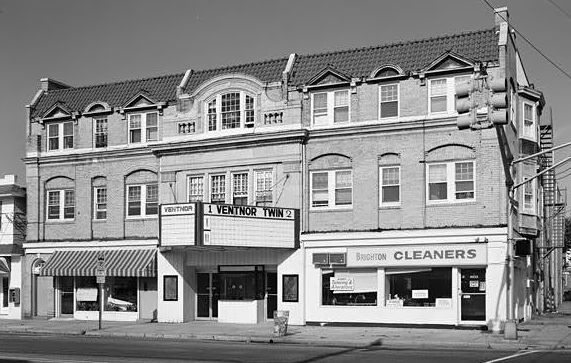 Downtown Ventnor Initiative Downtown Ventnor Initiative
On any given day, in a number of towns around New Jersey and the nation, residents awaken to find their hearts swell with pride about the city they call home. The appearance of their own homes reflects the pride over which they can be expected to exercise control, as they deliver TLC whenever they paint their house or pull weeds and plant flowers around their yard. The appearance of their commercial district reflects a comparable level of pride as their Main Street merchants and city government lay out a welcome mat to make a good first impression on new visitors.
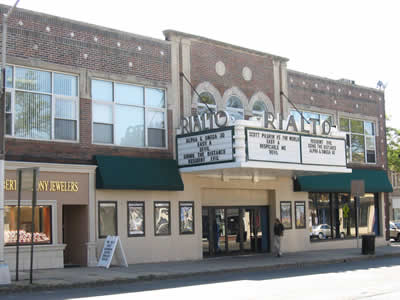 Of the four projects that are approved by the Fund Advisors, this last represents what may be the longest-term goal seeking to achieve results and it expects to take a one-block-at-a-time approach. One of our Fund Advisors is Tim Kreibel who was tapped into service after he first proposed, in March 2015, that taking small bites and small steps are one way of starting. Of the four projects that are approved by the Fund Advisors, this last represents what may be the longest-term goal seeking to achieve results and it expects to take a one-block-at-a-time approach. One of our Fund Advisors is Tim Kreibel who was tapped into service after he first proposed, in March 2015, that taking small bites and small steps are one way of starting.
After looking over old photos of Ventnor, Tim Kriebel said he can imagine what the city’s downtown looked like before online shopping and giant malls.
Relying upon pro bono counsel, he incorporated a non-profit. He also started a GoFundMe account which attracted some donations. But without an IRS ruling conferring tax-deductibility as a 501(c)3 – a ruling which can take a good number of months for the IRS to decide -- its progress in reaching a stated goal of $25,000 languished. In spring 2015, Tim attended a gathering with CFSJ’s executive director, who gave a presentation about the value of Ventnor having a big-tent charitable non-profit operating within the embrace of a regional community foundation. Such an arrangement is able to confer immediate IRS qualification as well as the flexibility to address evolving needs.
Only landlords who own the properties which line our commercial districts can decide whether to invest in the physical structures of their properties. Sometimes this can be done in conjunction with merchant-tenants who have a vested interest in presenting attractive storefronts while still keeping current with their monthly rents. Sidewalks, street lamps, and touches of color with planters, shrubs, flowers are another part of that overall appearance. 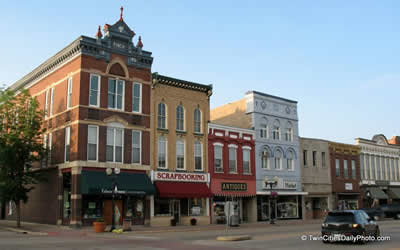
The Ventnor Community Fund & Endowment already has banked with CFSJ a $2,500 donation to kick-start this initiative toward reclaiming Ventnor’s PRIDE as it is reflected in commercial districts along Dorset Ave., Ventnor Ave., and Atlantic Ave. The release of the funds-on-hand is contingent upon that sum being matched. But if every commercial district is to someday reflect PRIDE in the city, it will require commercial property owners coming together to decide upon a mutual-consensus streetscaping “look” they wish to see Ventnor achieve.
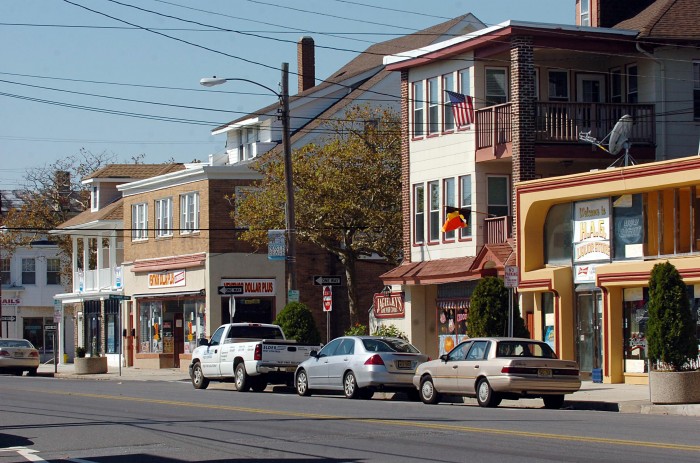 The city has been spotty in its attention to the need to water flowers and trees bought by private donors in 2008 and placed in city-owned planters for which city taxpayers paid. In 2008 and 2009, flowering planters got watering attention from Ventnor Public Works. Thereafter, there seems to have been a decision to halt the practice. In a summer 2013 meeting, the Department Head of Public Works stated that he had suspended plant watering activities upon the basis that there had been a long-ago agreement that merchants would water plants. Many merchants lack a water spigot near their property from which they can draw. The spotty end-result has seen some planters with dead vegetation become trash receptacles while others get TLC from merchants who care. The city has been spotty in its attention to the need to water flowers and trees bought by private donors in 2008 and placed in city-owned planters for which city taxpayers paid. In 2008 and 2009, flowering planters got watering attention from Ventnor Public Works. Thereafter, there seems to have been a decision to halt the practice. In a summer 2013 meeting, the Department Head of Public Works stated that he had suspended plant watering activities upon the basis that there had been a long-ago agreement that merchants would water plants. Many merchants lack a water spigot near their property from which they can draw. The spotty end-result has seen some planters with dead vegetation become trash receptacles while others get TLC from merchants who care.
Margate’s downtown beautification effort to install paving stones on streets and more attractive new street lamps and trees at uniform distances in its commercial area began with a very committed property owner. That was the “spark” that ignited attention to the role that a pretty downtown has in attracting store traffic. Ventnor doesn’t have a commercial property owner like Joseph Tozzi, possessed of several contiguous properties and able to strike that “spark” which ignites something more. But this project initiative aspires to find other Ventnor stakeholders who want to make contributions to beautification of their city which extend beyond the boundary of their own personal property’s boundaries.
BACK TO TOP
|